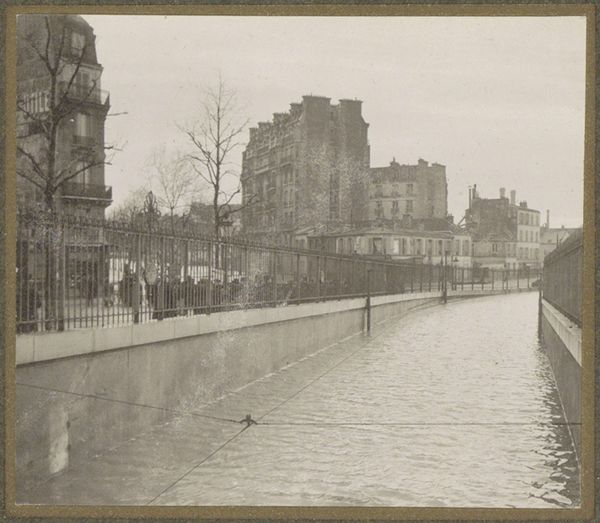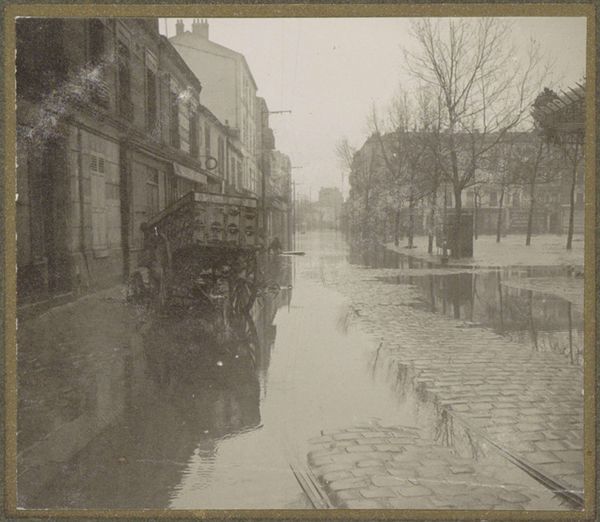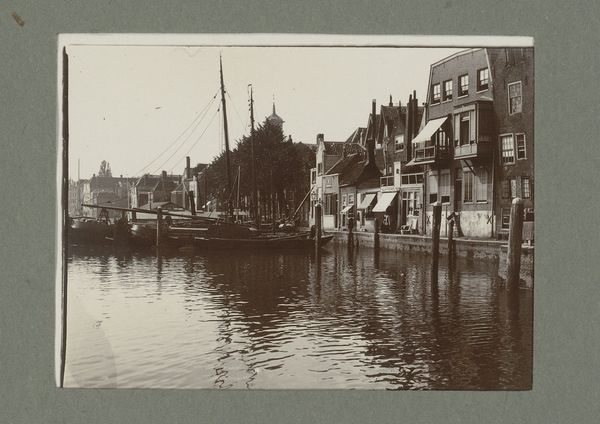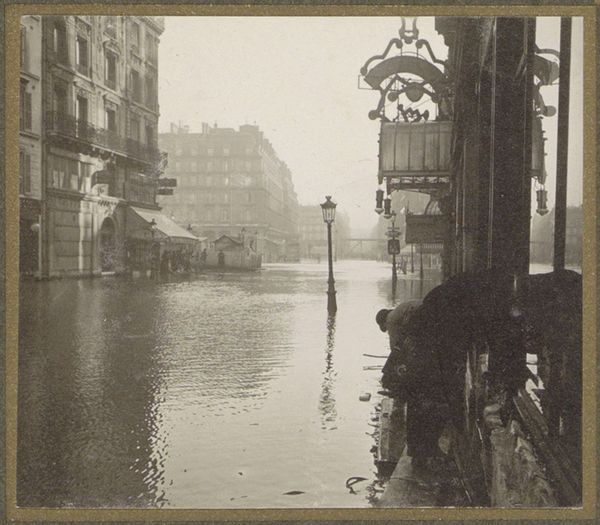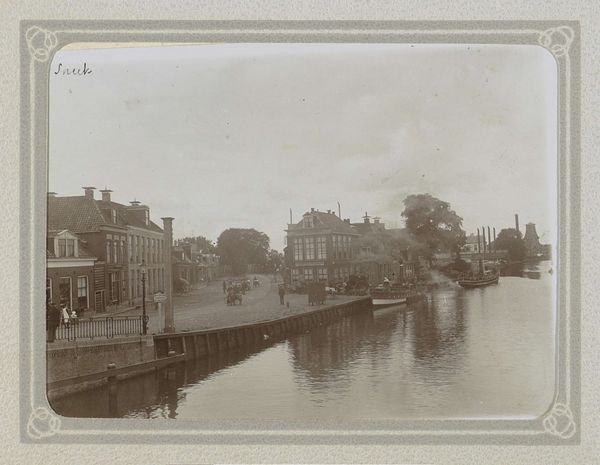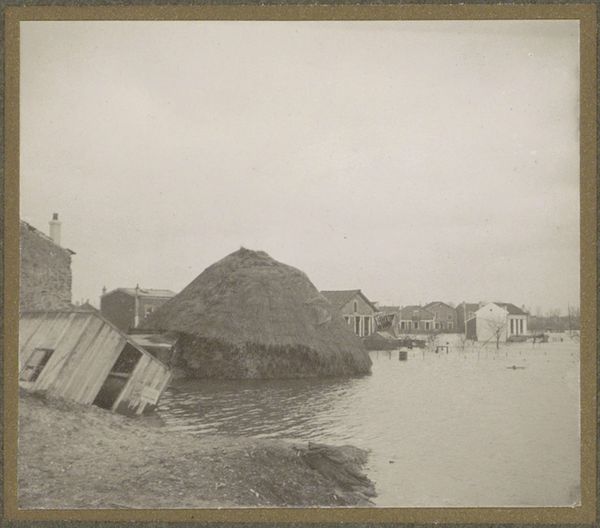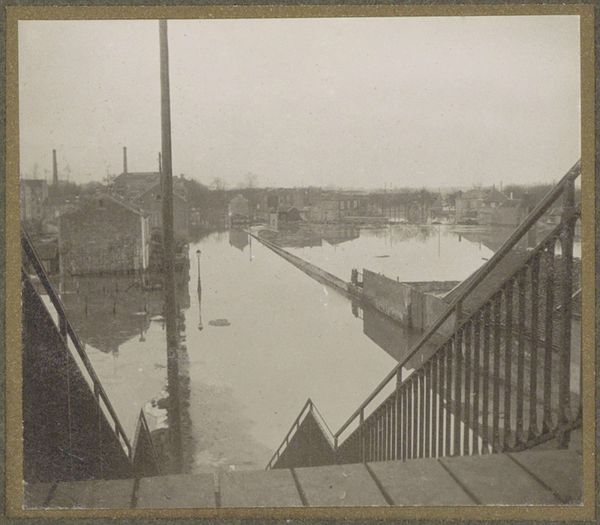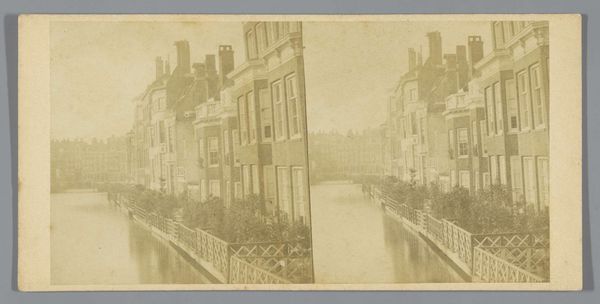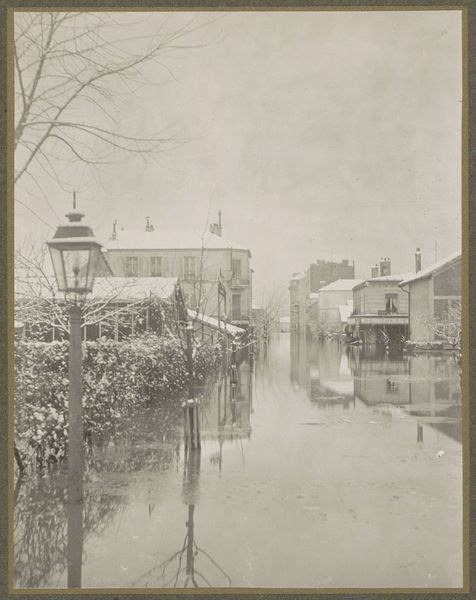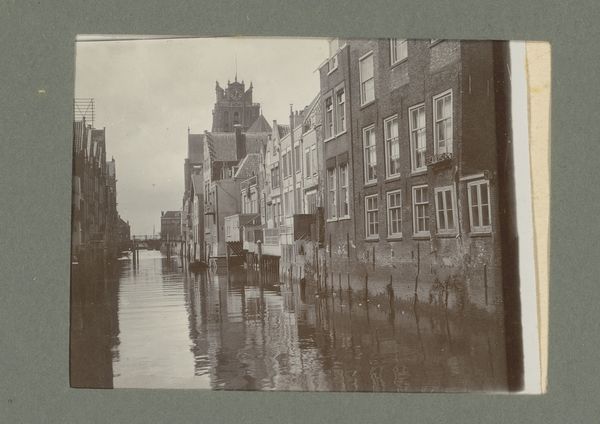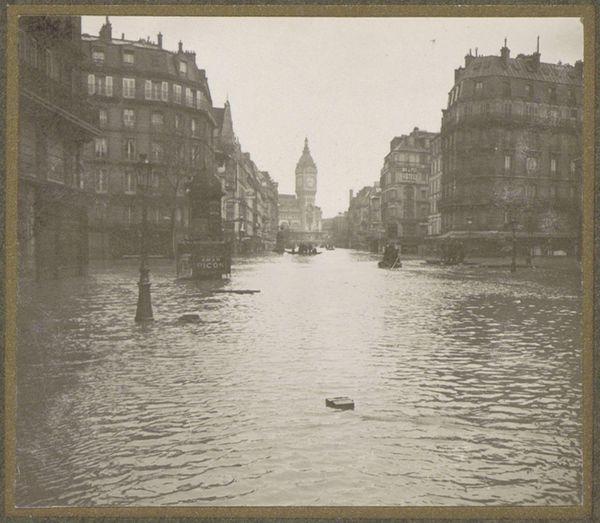
Dimensions: height 54 mm, width 60 mm
Copyright: Rijks Museum: Open Domain
Curator: This gelatin silver print by G. Dangereux, created between 1910 and 1911, is entitled "Ondergelopen straat met een hek tijdens de overstroming van Parijs"—or, "Flooded street with a fence during the Paris flood." Editor: Stark. The muted tones evoke a deep sense of melancholy and abandonment. The strong verticals of the fence contrast the horizontal expanse of the water. Curator: The photograph captures a pivotal historical event. The great flood of 1910 was a social disaster; examining photographic documentation like this allows us to understand the lived experiences of Parisians. Note the debris floating in the water – these materials become evidence of daily life disrupted by natural forces. Editor: Structurally, I’m intrigued by how the image is bisected, aren't you? The fence creates a sharp foreground, and the receding buildings offer depth and a diminishing perspective. The composition guides our eye through the devastation. Curator: I see that division also. It shows us two realms of experience at that time. On one side is privilege, order, and exclusion via that fence; and on the other is the shared fate of people and the street, both overcome by water. The print itself is a product of early 20th-century photographic technology, and this particular printing process lends a specific texture and tone to the image. This tonality becomes another material to decode as its physical representation carries emotional weight. Editor: The photograph is quite literal; the gray palette heightens that realism. The scene has the potential to descend into pure chaos, but the photographer created harmony and balance. We almost forget this records an actual historical event. Curator: Yes. Dangereux’s image reminds us of the vulnerability of urban infrastructure and the shared impact of climate events, prompting us to question how such infrastructures have developed and for whom. Editor: And considering the interplay between light, form, and subject—the photograph transcends mere documentation, becoming a study of desolation. Curator: Thinking about this, it serves to consider images not just as aesthetic objects, but as testaments to a moment when human activity and environmental forces violently meet. Editor: A potent visual statement of a society confronting disaster.
Comments
No comments
Be the first to comment and join the conversation on the ultimate creative platform.
